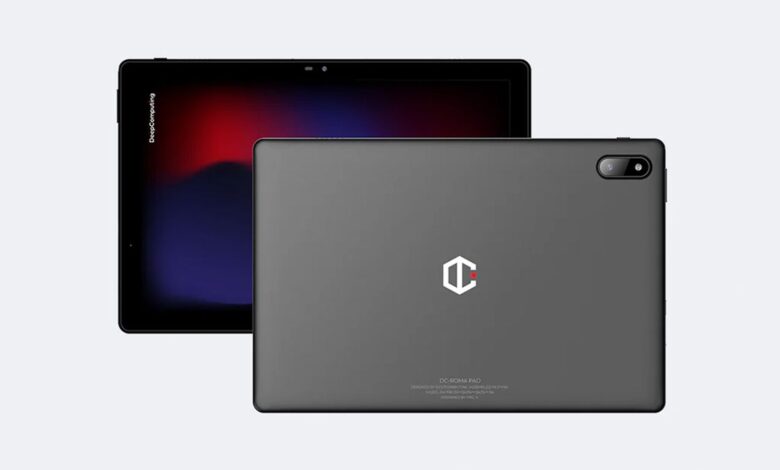RISC-V CPU arrives on a tablet starting at $149


DeepComputing, one of the leaders in RISC-V development, just announced its DC-ROMA RISC-V Pad II tablet. This mobile device is powered by a SpacemiT Key Stone K1 SoC, the same processor found in its upgraded DC-ROMA Laptop II. Thus, it is easier for developers already familiar with the system to use the new tablet.
The Pad II runs Ubuntu Desktop 24.04 and supports touch inputs, too, allowing developers to test and develop RISC-V mobile apps directly on it. Of course, writing code using an on-screen keyboard will likely be a punishment for a developer, so DeepComputing ensured that the Pad II also supports external keyboard connectivity.
The DC-ROMA RISC-V Pad II starts at $149 for the 4GB RAM version and is already available for pre-order on the DeepComputing store. If you get the 16GB RAM variant, the tab is compatible with the Android Open-Source Project (AOSP) Android 15 operating system. Here are the complete specifications of the DC-ROMA RISC-V Pad II tablet.
Swipe to scroll horizontally
| Component | Specifications |
|---|---|
| CPU | RISC-V 64-bit 8-core CPU |
| Row 1 – Cell 0 | AI Fusion Computing Engine (up to 2Tops@INT) |
| Row 2 – Cell 0 | Vector Engine (up to 256 length) |
| GPU | BXE-2-32 |
| ROM | eMMC5.1 (up to 128GB) |
| RAM | LPDDR4 (up to 16GB) |
| Display | 10.1-inch IPS |
| Resolution | 1200 x 1920 |
| Touchpoints | 10 points |
| Front camera | 2 megapixels |
| Rear camera | 5 megapixels, autofocus |
| I/O | USB 3.0 Type-C + DP |
| Earphone | 3.5mm |
| Battery | 6000mAh |
| OS | Ubuntu 24.04 |
The Premium variant of the tablet is expected to be available starting September 15, 2024, while the Android 15 upgrade should arrive by 4Q24 for all 16GB-equipped Pad IIs. This RISC-V-powered tablet is helping developers build more mobile apps for the open standard, which suggests that DeepComputing is seeing a future where more users use it daily.
This development is crucial for companies in China, especially as the U.S. is continuously trying to block access to proprietary hardware via bans and sanctions to hold back its progress. Since RISC-V is an open-standard instruction set, with the entity overseeing its development, RISC-V International, based in neutral Switzerland, the U.S. cannot legally stop anyone, including Chinese companies, from using this technology.
Swipe to scroll horizontally
| Variant | Specs | Price |
|---|---|---|
| Basic | 4GB RAM + 64GB eMMC | $149 |
| Standard | 8GB RAM + 64GB eMMC | $199 |
| Advanced | 16GB RAM + 64GB eMMC (Android Upgradeable) | $249 |
| Premium | 16GB RAM + 128GB eMMC (Android Upgradeable) | $299 |
Washington D.C. has tried to investigate how it can prevent its East Asian competitor from using the technology, saying that the Chinese government is using RISC-V to develop chips it needs to overcome American dominance in semiconductors. However, Callista Redmond, the chief executive of RISC-V International, is adamant that it remains open to all. Redmond said, “RISC-V is an open standard and has incorporated meaningful contributions from all over the world. As a global standard, RISC-V is not controlled by any single company or country.”
Nevertheless, owing to RISC-V’s open-standard/open-source nature, advancements in this technology will benefit the entire world, not just China. So, as DeepComputing and other entities continue investing in this technology, we hope to see a future where we have multiple competing processor architectures, giving consumers the option to pick and choose what works best for them.



